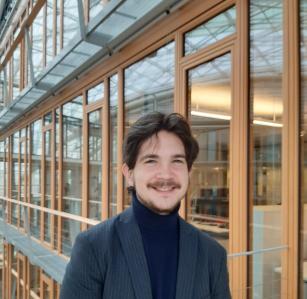An Estonian company builds the Baltic’s largest wind farm, boosting green electricity, energy independence and the local economy
Lauri Ulm heads wind development in Estonia at Enefit Green, a leading energy producer and developer in the Baltic region. For over a decade, he has poured his energy into the construction of the country’s biggest onshore wind farm, Sopi-Tootsi, which he affectionately calls his “little baby”. For Ulm, this project isn't just about generating electricity. He aims to foster a sustainable future for Estonia.

Lauri Ulm
“When I started working on wind farms, they were seen as outdated relics of an old subsidy scheme, and it wasn't popular to develop them,” he says. “Now this is changing, and our project is the best example of that.”
The Sopi-Tootsi project started in 2012, when a peat mine shut down in Põhja-Pärnumaa, a municipality in southeast Estonia. Local officials and Enefit Green saw this as an opportunity for change. They envisioned repurposing the area for renewable energy. With 38 turbines Sopi-Tootsi is set to be the most powerful wind farm in the Baltic region.
“The farm will provide green electricity to almost a tenth of Estonia’s electricity consumers,” Ulm says.
The European Investment Bank is supporting Enefit Green with €180 million financing agreement signed in September 2023. Upon completion, the wind farm will be capable of powering over 197,000 households annually.
- Read more about three Spanish projects strengthen Europe’s energy autonomy with solar and wind capacity and transmission networks
Estonia goes green
Estonia is experiencing a significant shift towards renewable energy. Once heavily dependent on carbon-intensive oil shale, the country is now looking for cleaner alternatives, leading to increased demand for renewable energy infrastructure. In this evolving landscape, wind power and its farms are capturing attention, because they cut greenhouse gas emissions and enhance Estonia's energy independence.
The development of the Sopi-Tootsi wind farm is a prime example of these benefits. "Our new wind farm alone will generate about 770 gigawatt-hours, effectively doubling the nation’s current wind energy output,“ says Ulmi. “It will prevent the emissions of nearly 700 000 tonnes of CO₂ into the air.”
- Read more about a logistics company that turns the roofs of its facilities in Czechia and elsewhere into massive solar power farms
Supporting the largest wind farm in Estonia
Building wind farms requires intricate planning and substantial investment. Challenges range from securing suitable land to integrating the turbines with existing power grids. “These renewable projects require a lot of initial capital expenditure to navigate from blueprint to fully operational facilities,” says Ulm. "It’s really important to have the funding in place and to have them on competitive terms.
With the European Investment Bank’s support, Enefit Green can continue to fuel the construction of the state-of-the-art facility. The operation is part of the Bank’s financing package in support of REPowerEU, a European Commission plan developed in response to Russia’s invasion of Ukraine that aims to reduce EU dependence on fossil-fuel imports and accelerate the green transition.
“By financing the biggest wind project in Estonia, we are boosting the country’s transformation to a low-carbon economy,“ says Daniel Kapitanski, a loan officer at the European Investment Bank who worked on the deal.
- Read more about how price pressures and increasingly extreme environments push wind turbine innovation
A wind of change
The project has a social dimension, too.
The wind farm in Põhja-Pärnumaa generates financial rewards. Through Estonia’s local benefit scheme, the municipal budget receives between €300 000 and €600 000, with the exact amount depending on the farm’s output and the prevailing power prices

The payment to the owners of residential buildings up to 2 km from the wind turbines is up to 4,350 euros per year.
Enefit Green also offers locals within 6 kilometres of the facility electricity up to 20 megawatts without paying network fees. And a new road linked to the wind farm will shorten the journey to Tallinn.
“The municipality can use the funding to build a new kindergarten, build a new playground and plant some trees, build some roads,“ says Ulm. “This can help bring new industries, improve the quality of life, and create more employment.”
